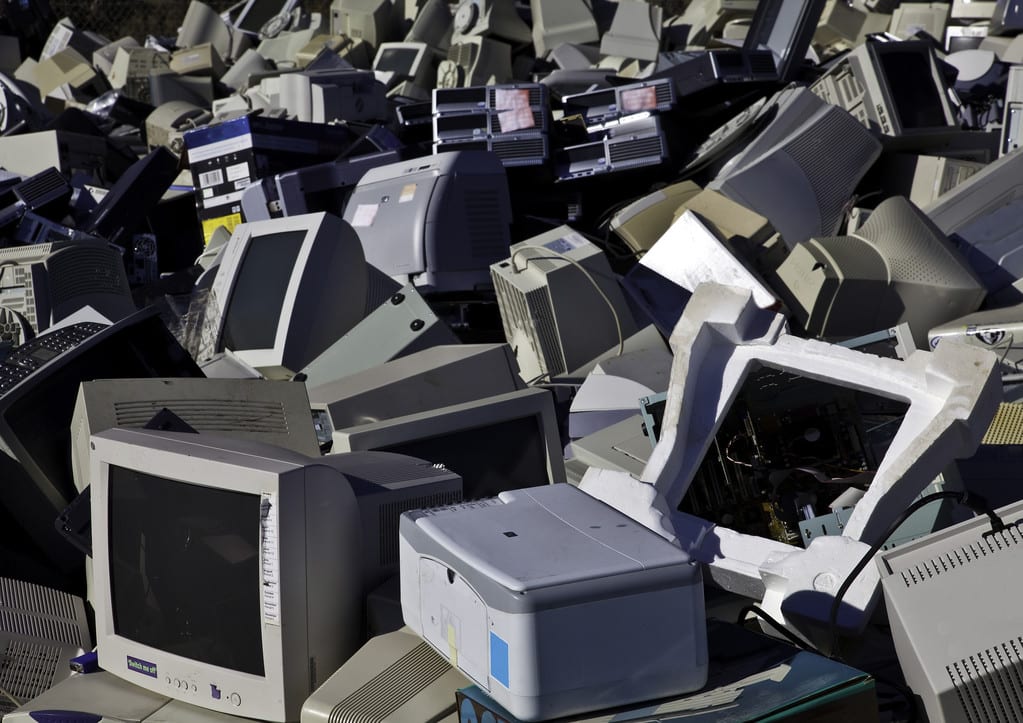Businesses love technology. It’s revolutionized the places we work; the way we buy, sell and trade; and the way we communicate on a daily basis. Put simply, any true 21st century business cannot do without it. However, all that tech has created a problem that very few people predicted back when we were all still hand writing letters and dressing up windows in stores. What do we do with all that waste?
In fact, our addiction to all things digital is now fueling a crisis, and as one of the fastest growing waste streams on the planet, e-waste is among the defining issues of our age. Part of the problem is that e-waste is notoriously difficult to recycle, however, other challenges surrounding planned obsolescence and the right to repair are also playing their part.
So, how do businesses deal with e-waste effectively? And how can we reduce the millions of tonnes of waste generated year-on-year. Here we look at the best ways to deal with e-waste as a small business, so you can ensure you are part of the solution and not the problem.
Stop E-Waste at the Source
As with any type of effective waste management, reduction is always the priority. At first glance, this approach may seem problematic for businesses, after all, it’s difficult to imagine any company functioning without a bank of computers, or any CEO leaving the office without a smartphone. However, reducing waste can be achieved in other ways.
Spend some time researching the equipment you buy — quality over quantity is always preferable — and while it can be challenging to buy something that will last when it comes to technology, some manufacturers quite obviously invest more in high quality products. Additionally, it’s worth looking into whether manufacturers offer repair or recycle schemes that can also extend the life of your equipment, or ensure broken devices are taken care of by the manufacturer.
Repair or Upgrade Equipment
Ensuring your equipment is used to its full potential over its entire lifecycle is also another way to reduce waste at the source. Certain products are generally much easier to upgrade and repair than others, and if you’ve done your research, you should have some idea of which direction to head when making a purchase.
However, the Right to Repair movement is also gaining traction today, and the push to make manufacturers more responsible for their products is seen as a critical piece of the e-waste puzzle. In future, it is hoped that more products will be easily and cheaply repaired and upgraded.
Donate Unused Equipment
Equipment that is sitting unused is perhaps the worst kind of waste. Large amounts of resources have gone into making the product itself and, when left unused for long periods, it very quickly becomes obsolete and is little use to anyone. However, donating your older equipment before this is a viable outlet for e-waste that ensures it remains in use.
Donations can be on a national or community level, and there is almost always someone who can make use of those devices gathering dust, even if they are essentially useless to your business. Donating forgotten or unloved equipment also has the potential to provide your business with tax incentives and a welcome boost to your brand—so everyone benefits.
Sell Older or Broken Equipment
One of the most common questions for businesses when considering e-waste is what to do with older, obsolete, or broken equipment. In many cases, there’s no escaping the fact that most businesses require high-speed electronics that are at the cutting edge of the industry, and upgrading is usually the only way to ensure your business can keep pace. However, that doesn’t mean that older or broken equipment should go in the trash.
In many cases, broken equipment can be stripped down for parts, and there’s a healthy second-hand market for such products. Older equipment can usually find a home with someone who doesn’t require the latest technologies and who might not have the same kind of spending power as a business. After all, if you previously invested in the very best equipment, it should still retain a healthy resale value even after a few years.
Recycle E-Waste Properly
When it comes to recycling e-waste, there’s no one-size-fits-all approach, and the complexities of each device mean that recycling is always challenging. However, businesses should always strive to recycle e-waste properly, and whether it’s computers or smartphones or batteries and printer toners, there are likely facilities in your area that will accept some, if not all, types of e-waste.
Alternatively, reaching out to the professionals can help you take control of both your e-waste recycling and general management. Companies such as this will ensure your e-waste is collected, delivered to the correct facilities for recycling, or even donated to worthy causes. Additionally, there is also the option to assess your existing e-waste management measures and find areas that can be improved as your business grows—it’s the ideal way to build a sustainable plan to deal with e-waste as our world becomes increasingly reliant on technology.
computer junk -DepositPhotos


